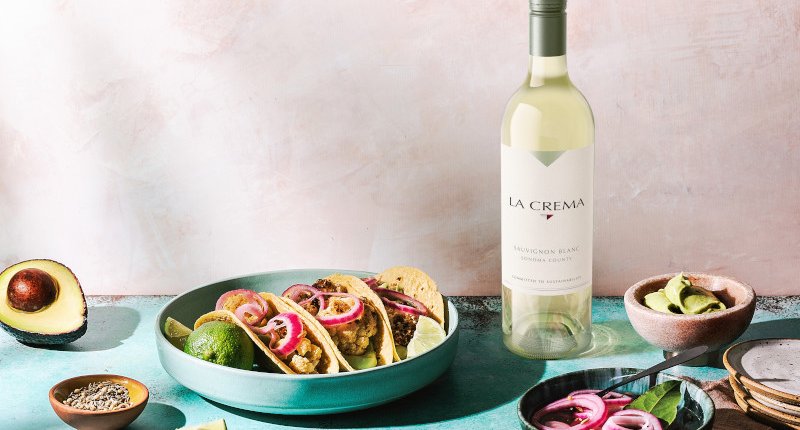
Recent Posts
Pinot Grigio vs Sauvignon Blanc: What Are the Differences?
May 18th, 2025
Let’s be honest: if you’ve ever stood in front of the wine aisle squinting at labels, wondering, “Am I in a Pinot Grigio mood or a Sauvignon Blanc state of mind?”—you are not alone. The Pinot Grigio vs Sauvignon Blanc debate is a classic for a reason. These two crisp, zippy white wines are some of the most beloved bottles on the shelf, but their personalities? Completely different. Like summer and spring. Same realm, wildly different vibes.
In this blog, we’re diving deep into the glass to explore everything you need to know about Pinot Grigio and Sauvignon Blanc. We’ll break down their histories, styles, flavor profiles, food pairings, and—yes—the juicy little details that make them unique (plus a few they actually share). And at the end, we propose a fun idea for putting everything you’ve learned into action. Ready to sip and learn?Why Are Pinot Grigio and Sauvignon Blanc Popular?
Pinot Grigio has been the breezy bestie of wine drinkers for decades—light, easygoing, and reliable for everything from patio brunches to sunset sips. But Sauvignon Blanc? It’s the rising star of the moment. Zesty with bold aromas and unapologetically vibrant, it’s been climbing the popularity charts faster than you can say 'cheers.' Thanks to global winemakers embracing new techniques and cooler-climate regions leaning into crisp, expressive whites, Sauvignon Blanc has officially entered its main-character era (and we think, deservedly so).A Little Sip of History
Pinot Grigio hails from Northern Italy (though it’s originally from Alsace, France, where it’s known as Pinot Gris—more on that later), where it became the unofficial wine of al fresco dining. Light, fresh, and rarely fussy, it was designed to be enjoyed—not overanalyzed. Sauvignon Blanc, on the other hand, was born in France’s Loire Valley and Bordeaux, but really came into its own in New Zealand, where it became synonymous with gooseberry-laced zing. And now? You’ll find it everywhere from Napa Valley and Sonoma County to Marlborough, always keeping things fresh.Understanding Pinot Grigio
What is Pinot Grigio? It’s a white wine made from a grayish-purple grape (yep, it’s a bit of a misnomer) that delivers a clean, dry, and subtle sip. It’s the kind of wine that doesn’t demand attention—but gets it anyway. And if you’re wondering, “Is Pinot Grigio dry?” the answer is a firm yes, usually. Though some styles can lean fruitier, the classic is refreshing, clean, and bone-dry.Pinot Grigio Main Characteristics and Style
Let’s break it down, from vine to glass.- Grape Variety:
- Pinot Grigio grapes are actually a mutation of Pinot Noir, which explains their grayish-purple hue (Grigio means “gray” in Italian). They thrive in cooler climates, grow in tight bunches, and have a neutral profile—enabling winemakers to craft light, easy-drinking wines. Italy is the OG hotspot, but you’ll also find excellent bottles from California (notably La Crema Monterey Pinot Gris), Oregon, and even Australia.
- Flavor Profile:
- Pinot Grigio typically offers delicate notes of green apple, lemon, white peach, and a whisper of almond. The style is usually light-bodied, with a clean, mineral-driven finish—though richer, more textured versions (especially from Alsace, where it’s called Pinot Gris) bring in honeysuckle and spice.
- Food Pairing:
- Pinot Grigio is your go-to choice for light, fresh dishes: think grilled shrimp, Caprese salads, lemony chicken, or a casual veggie flatbread. It’s basically the white T-shirt of wine—it goes with everything.
Understanding Sauvignon Blanc
What is Sauvignon Blanc? Known for its electric acidity and aromatic intensity, Sauvignon Blanc is one of the world’s most popular white wines. Its signature flavor comes from both the grape variety itself and terroirs like the Loire Valley, France, or Marlborough, New Zealand.Sauvignon Blanc Main Characteristics and Style
Let’s take a closer look at what makes this wine so popular.- Grape Variety:
- Sauvignon Blanc grapes are bright green and grow best in cooler climates like New Zealand, France, and coastal California. The grape’s high natural acidity is its defining trait, bringing that mouthwatering freshness we all love.
- Flavor Profile:
- Get ready for a flavor explosion of grapefruit, lime, green apple, passion fruit, pineapple, and—yes—sometimes a little freshly cut grass or gooseberry. Styles range from lean, mineral, and bright to tropical and lush, depending on the region and winemaker.
- Food Pairing:
- Thanks to its high acidity, Sauvignon Blanc is amazing with seafood, sushi, tangy goat cheese, Thai cuisine, salads, or anything herby—like pesto pasta or a dill-heavy potato salad. Check out Sips & Tips: Sauvignon Blanc or explore Wine and Dessert Pairings That Wow for exceptional inspiration.
Key Differences Between Pinot Grigio vs Sauvignon Blanc
Now that you know the backstory, let’s look at what sets these two wines apart.- Taste: Pinot Grigio is light and clean with delicate citrus and pear notes and a dry, crisp finish. Sauvignon Blanc, on the other hand, is bold, bright, and packed with lime, green apple, and often tropical fruit flavors. Sauvignon Blanc has tangy acidity and aromatic complexity.
- Body and Texture: Pinot Grigio leans light-bodied, making it refreshing and smooth. By contrast, Sauvignon Blanc can range from medium to fuller-bodied, particularly when aged in oak, which imparts texture to the wine.
- Aroma: Pinot Grigio is restrained on the nose—think citrus, pear, and soft floral hints. Sauvignon Blanc brings a full bouquet to the party: grapefruit, passion fruit, and a hit of that signature “green” note.
- Regional Variations: Pinot Grigio is classically Northern Italian but also thrives in cool-climate regions, like Monterey County, California and Willamette Valley, Oregon. Sauvignon Blanc spans the globe, from its homeland in the Loire and Bordeaux, France, to Marlborough, New Zealand, and Napa Valley and Sonoma County, California.
- Food Pairings: Pinot Grigio loves lighter fare—seafood, veggies, and summer salads. Sauvignon Blanc can handle bold flavors, herbs, and zippy sauces. It's the wine equivalent of turning the volume up.
Similarities Between Pinot Grigio vs Sauvignon Blanc
Despite their differences, these wines share a few commonalities white wine enthusiasts adore.- Dryness: Both wines are typically dry, meaning they’re not sweet. They’re all about crisp refreshment, not dessert-in-a-glass vibes.
- Served Chilled: For maximum enjoyment, both Pinot Grigio and Sauvignon Blanc are best served well-chilled, bringing out their acidity and freshness. Pop them in the fridge for a few hours and get ready for a refreshing sip.
- Perfect for Summer: Whether you’re headed to the pool, brunch, or a sunny picnic, these wines belong in your summer tote bag.
- Crowd-Pleasers: They’re both approachable, easy-drinking, and beloved by wine newbies and connoisseurs alike.
How to Choose Between Pinot Grigio and Sauvignon Blanc
When, choosing, it all comes down to your mood (and maybe what’s for dinner).- Do you want something soft, mellow, and easy to sip while you fold laundry or gossip with friends? Go for Pinot Grigio.
- Craving something bright, bold, and packed with personality? Sauvignon Blanc is your girl.
- Pairing with spicy food, tangy sauces, or herbs? Sauvignon Blanc wins. Goat cheese? Sauvignon Blanc wins again. A delicate seafood pasta? Go for the Pinot Grigio.
- Need a neutral wine for picky guests? Pinot Grigio is safe and steady.
Create Your Own Taste Test: La Crema Sauvignon Blanc vs. La Crema Pinot Gris
Why choose one wine when you can have a whole flight of fabulous? Create your own at-home tasting experience with La Crema’s standout Sauvignon Blancs and our beautifully balanced Monterey Pinot Gris. For a blind tasting, simply wrap each bottle in opaque paper and prep separate glasses for each wine. Or go the casual route—pour, sip, and compare. Explore the textures, savor the aromas, and see which style truly speaks to your palate. Here is some helpful information about each wine for your taste test:- La Crema Sonoma County Sauvignon Blanc
- Vineyards— This Sauvignon Blanc comes from top-notch vineyards across Russian River, Alexander, Bennett, Dry Creek, and Knights Valleys—where well-draining soils give our winemakers the perfect canvas to craft something truly special.
- Winemaking— Fermented in neutral French oak barrels, this wine gets a smooth, rounded texture—balanced by crisp acidity that keeps every sip bright and juicy.
- Aromas—Nectarine, lime, and melon, with subtle hints of wet stone and flint
- Flavors—Grapefruit, white peach, mango, and guava
- La Crema Cougar Ridge Sauvignon Blanc
- Vineyards— This wine is made from grapes grown high up on Alexander Mountain at Cougar Ridge Vineyard, where blocks planted between 500 and 1,000 feet elevation soak up the sunshine and rocky soils. The result? A vibrant, fruit-forward wine with gorgeous texture, minerality, and structure.
- Winemaking— Barrel fermentation in neutral French oak adds body and texture, while lively acidity keeps things fresh and finishing with a juicy pop.
- Aromas— Fresh melon, passionfruit, and orchard grass
- Flavors—Golden kiwi, white peach, and mango
- La Crema Monterey Pinot Gris
- Vineyards—This fruit for this wine comes from four distinctive vineyards in the Monterey appellation near the towns of King City, Soledad, and Greenfield.
- Winemaking— This wine is mostly fermented in stainless steel, with a splash of neutral oak, to keep its fresh fruit flavors bright while adding depth and a smooth, layered acidity.
- Aromas—Pear, lemon curd, pineapple, and white flowers
- Flavors—Meyer lemon and nectarine











